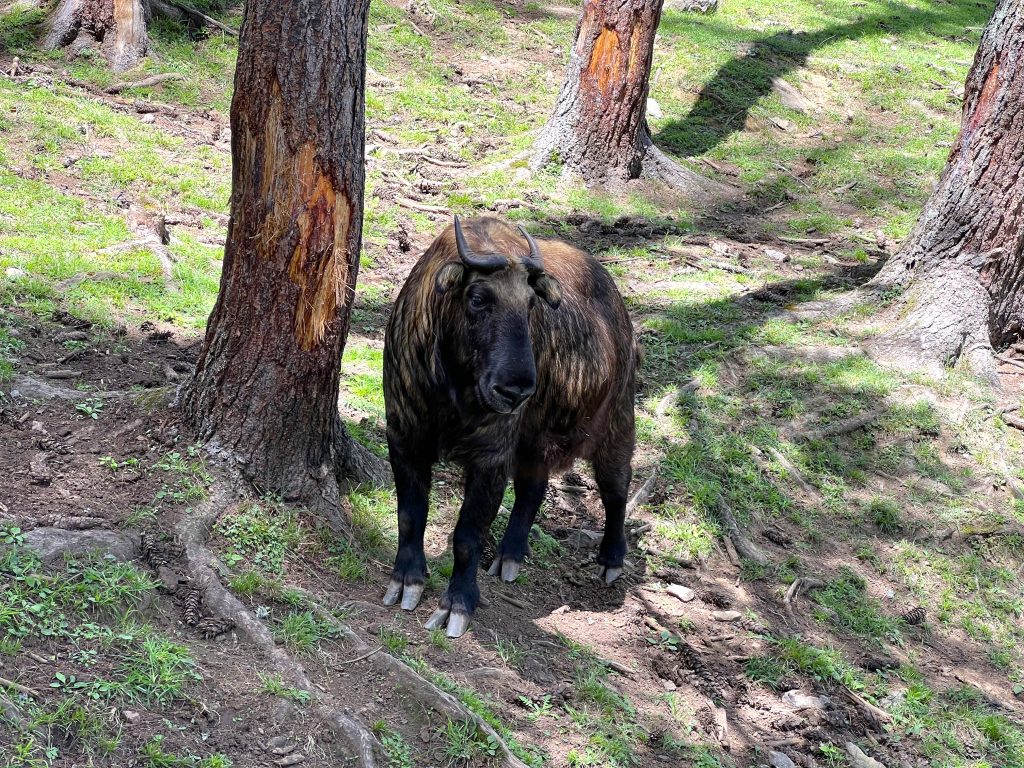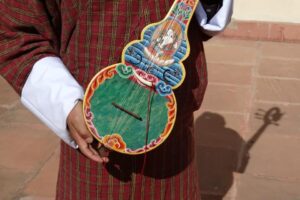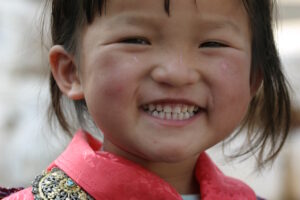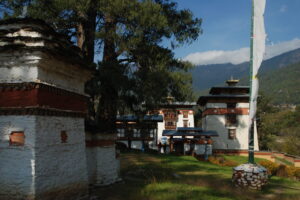
Takin – the national animal of Bhutan has a distinctive appearance with unmistakable gnu-like snout, arched horns, and golden-orange woolly coat. Locally known as the ‘drong gimtse’, they can also be found across northeastern India and Western China.
The Takin’s high religious significance is deeply rooted in a Bhutanese myth surrounding its peculiar origins. According to the locals, in the 15th century, the legendary “Divine Madman” Lam Drukpa Kunley arrived in Bhutan from Tibet. When asked by the people to perform a miracle, the saint demanded an entire cow and goat be served to him for lunch. After devouring the animals’ flesh, he took the remaining skeletons and fixed the goat’s head onto the cow’s body. With a snap of his fingers and a mystical mantra, Kunley brought this animal to life. He then named it the “Dong Gyem Tsey” or Takin.
Mature male Takins exemplify this beast’s mythical stature, with some specimens weighing over 300kg and reaching 1.4m tall at the shoulder. Their thick coats range from brownish-yellow to a brilliant orange, with the oldest males sporting the most vibrant hues. Other distinguishing features include the curving horn ridges and upturned “Roman” noses.
These socially gregarious herbivores undertake seasonal altitudinal migrations between alpine summers at elevations up to 5,500m and subtropical forest winters as low as 700m. Their varied vegetarian diet includes grasses, bamboo, herbs, and shrub leaves foraged across this expansive range.
Takins can be found along river valleys and are often associated with areas of natural salt licks. Despite being shy and preferring remote areas away from human habitation, they are frequently sighted near sacred Buddhist sites such as monasteries.
Unfortunately, habitat loss and overexploitation have rendered the Takin vulnerable to extinction, according to the IUCN Red List. Therefore, the Bhutanese government recognized the required effort for Takin conservation. They then created key protected areas within Jigme Dorji National Park, Wangchuck Centennial National Park, Phrumsengla National Park, and three territorial forest divisions (Wangdue Territorial Forest Division, Paro Territorial Forest Division, Thimphu Territorial Forest Division). Jigme Dorji National Park is considered the stronghold, hosting an estimated 500-700 individuals.
Motithang Takin Preserve, located in the Motithang district of Thimphu, is the only known captive population of takins in Bhutan. Originally a mini-zoo, it was converted into a preserve when it was discovered that the takins refrained from inhabiting the surrounding forest even when set free.
The enclosures were demarcated and fenced on an area of 3.4 hectares (8.4 acres). In 2004, the Royal Government of Bhutan and World Wide Fund (WWF Bhutan) collaborated to implement improvements, including a traditionally styled entrance gate, a small information center, signage, and trash receptacles.
The Motithang Takin Reserve has been an integral part of Thimphu city’s attractions and an ongoing visitor draw to observe the kingdom’s mythical national animal in a contained environment.
While traveling the forests and alpine meadows of Bhutan, you may be fortunate to spot these mythical creatures roaming freely. If you cannot trek to their remote natural habitats, a visit to Motithang offers a nice chance to observe Bhutan’s national animal up close.



